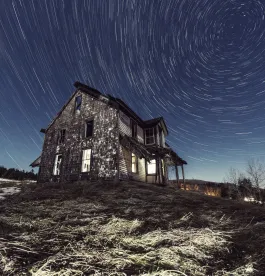When a building is damaged sometimes the repair and remediation has to be enhanced because of newly discovered building code or ordinance or law violations. For example, a windstorm causes a facade to collapse off a building and that collapse reveals that the method used to mount the facade on the concrete slabs violates the current building code and requires a different and more costly method to bring the building into compliance. If the building had insurance with a Blanket Ordinance or Law Coverage Endorsement, it is possible that the insurance company will have to pay the additional costs to bring the building in line with the building code. But depending on the nature of the loss and its connection to the building code issue, this coverage may be elusive.
 A recent decision by a New York intermediate appellate court addressed the Blanket Ordinance or Law Coverage endorsement and affirmed the motion court’s finding in favor of the insurance company and against the policyholder. St. George Tower v. Insurance Company of Greater New York, No. 651746/12 (N.Y. App. Div. 1st Dep’t Apr. 21, 2016).
A recent decision by a New York intermediate appellate court addressed the Blanket Ordinance or Law Coverage endorsement and affirmed the motion court’s finding in favor of the insurance company and against the policyholder. St. George Tower v. Insurance Company of Greater New York, No. 651746/12 (N.Y. App. Div. 1st Dep’t Apr. 21, 2016).
In St. George Tower, a flood caused damage to certain units in a cooperative apartment building. The carrier, which issued a commercial package policy, paid for remediation and repair of the flood damage. Some mold appeared and during the course of remediation, the architect found that the concrete slabs under the flooring were deteriorating and were in violation of the building code. The policyholder’s request that the carrier pay for the remediation of the concrete slabs to bring them into compliance with the building code was denied. The policy had a Blanket Ordinance or Law Coverage Endorsement that provided, in part, for coverage in the event the building “sustains direct physical damage that is covered under this policy and such damage results in the enforcement of the ordinance or law” (emphasis added). Another provision of the endorsement, covering “Increased Cost of Construction,” applies when an insured building sustains covered direct physical damage, and “when the increased cost [of construction] is a consequence of enforcement of the minimum requirements of the ordinance or law” (emphasis added).
The motion court granted summary judgment to the carrier on the policyholder’s breach of contract action. The Appellate Division affirmed. The essence of the decision is the lack of a direct link between the damage (the flood that occurred) and the enforcement of the building code because of what was a pre-existing condition in the concrete slabs. The court held that the “Ordinance or Law endorsement cannot be triggered simply by the discovery, in the course of an inspection necessitated by a covered event, of structural problems that amount to code violations.” This was true, said the court, whether the condition could have been discovered earlier or could never have been discovered absent the covered damage.
The court’s rationale for this rule is useful to understand: “If the rule were otherwise, even an inspector’s discovery of code violations resulting from shoddy original construction, such as beams or pipes made of sub-par materials, would leave the insurance company liable for the necessary replacement of those materials any time the problem happened to be uncovered in the course of damage remediation. We therefore agree with the motion court; there must be some direct connection between the covered damage and the enforcement of the ordinance, and the necessity of a relationship between the damage and the code enforcement work is not satisfied by the fact that the covered work cannot be completed until the code-compliant repairs are performed. On this record, no evidence was presented that the code-compliant repairs resulted from, or were even related to, the water damage.”
Here, because there was no direct connection between the water damage and the repairs needed to put the concrete slabs in compliance with the building code, the endorsement did not trigger and there was no coverage.




 />i
/>i

